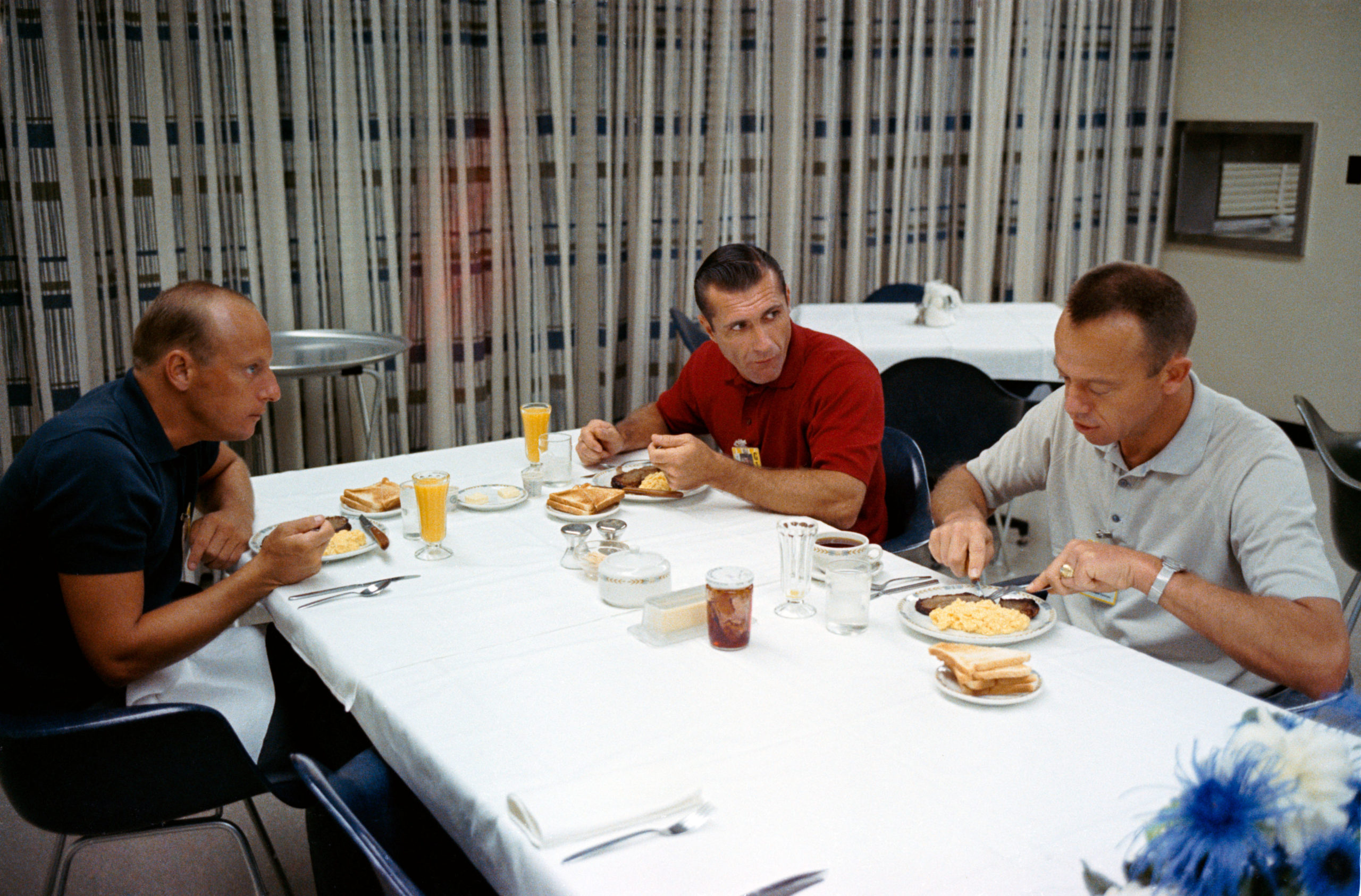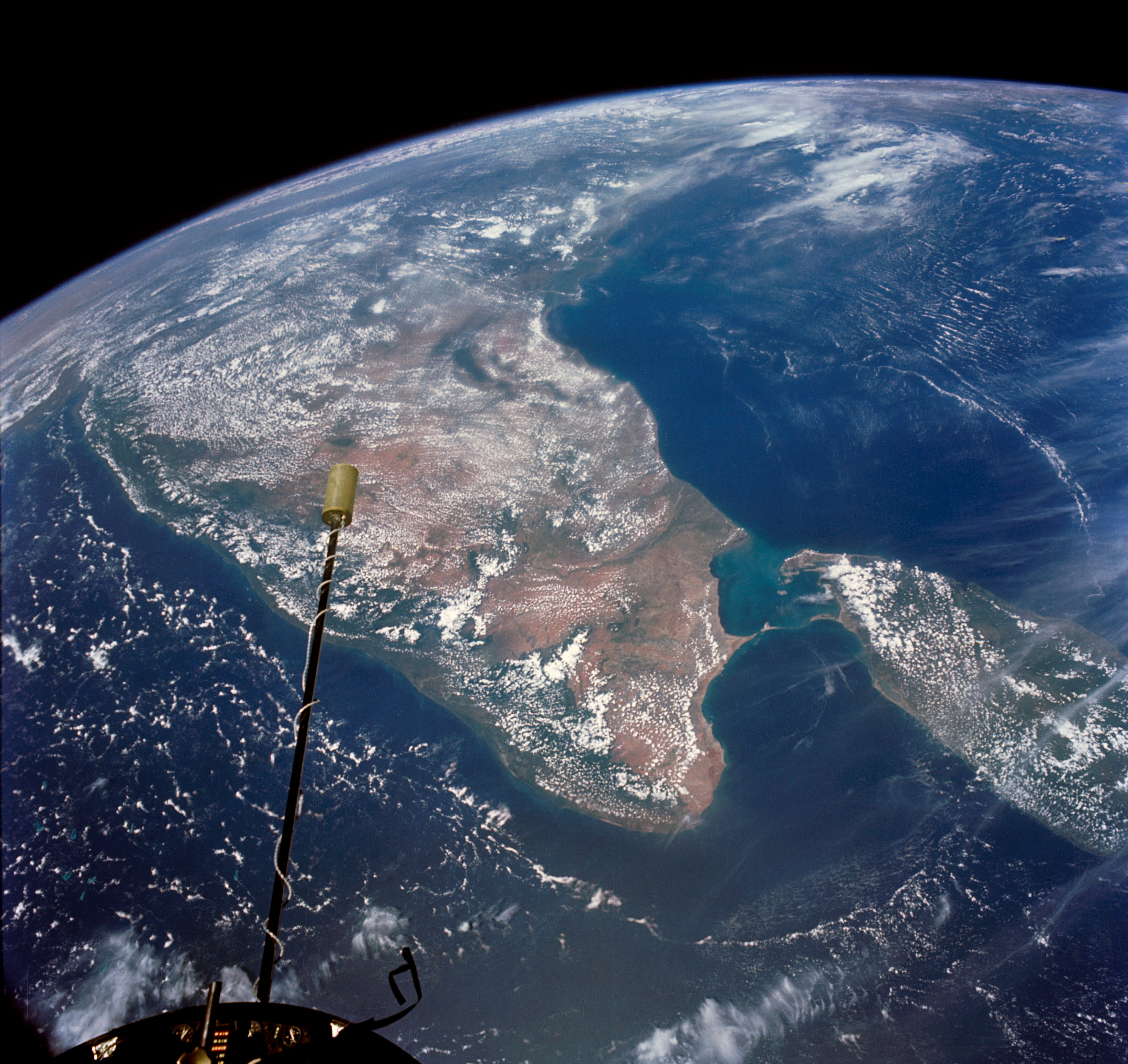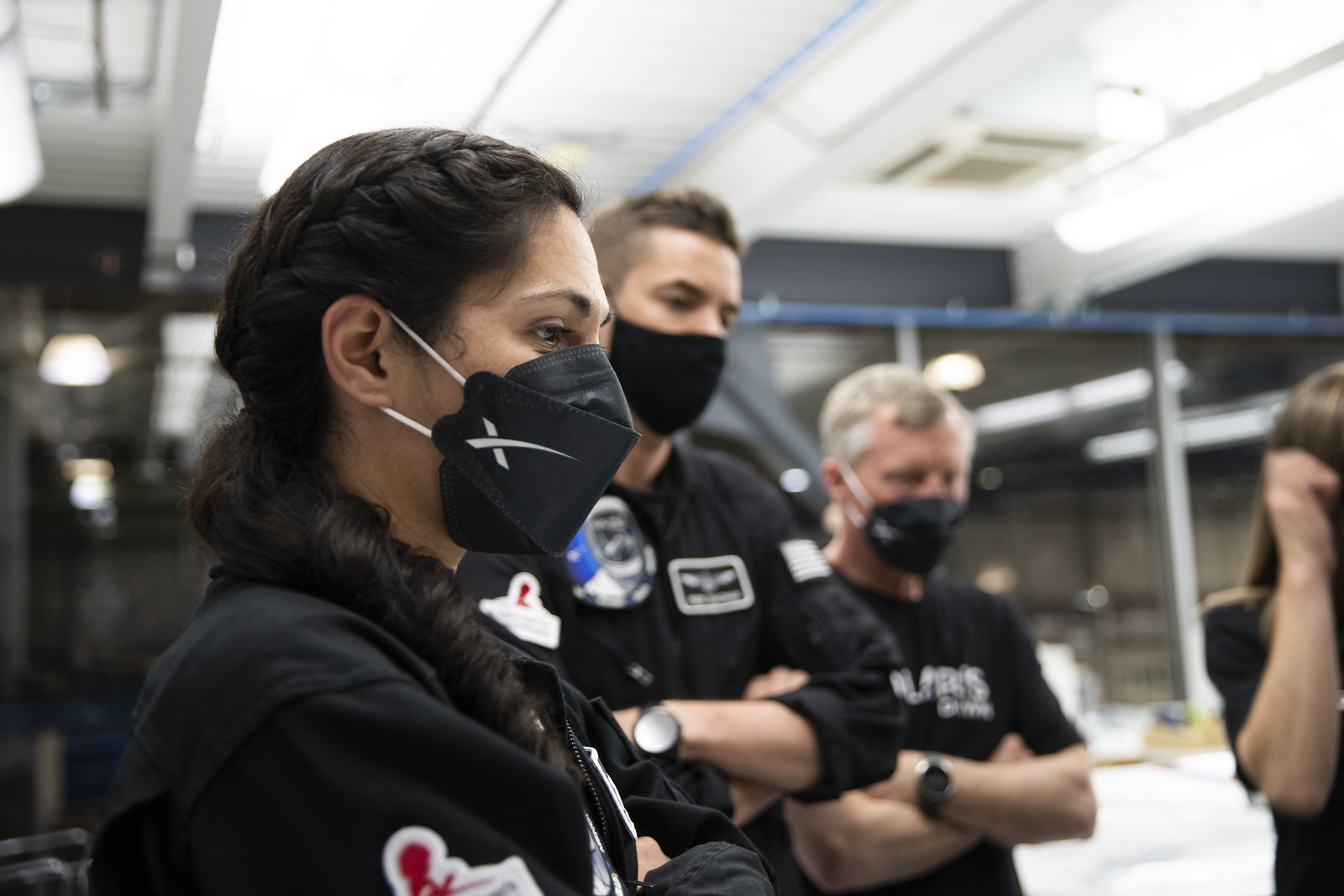
Six months out from attempting the highest non-lunar altitude record in over a half-century and the first all-commercial Extravehicular Activity (EVA), Polaris Dawn Pilot Scott “Kidd” Poteet took time out last week from a packed training schedule to discuss with UK-based GoSpaceWatch a dramatic five-day mission to low-Earth orbit. Commanded by Shift4Payments billionaire Jared “Rook” Isaacman—who purchased the seats and led last fall’s historic all-civilian Inspiration4 mission—the Polaris Dawn crew also includes Poteet and SpaceX lead space operations engineers Anna Menon and Sarah Gillis.
They will launch from historic Pad 39A at the Kennedy Space Center (KSC) in Florida no sooner than 1 November 2022, riding SpaceX’s twice-flown Dragon Resilience. Isaacman previously flew Resilience on last year’s Inspiration4 mission. It will be the third overall voyage of this particular Crew Dragon, which also supported the record-setting 167-day Crew-1 mission to the International Space Station (ISS) between November 2020 and May 2021. “Right now, we are scheduled to fly back on Resilience,” said Poteet. “Obviously, Jared’s very excited about that.”
Following discussions last fall with SpaceX CEO Elon Musk and the Hawthorne, Calif.-based organization’s business development team, the “Polaris Program” came into being as a campaign of up to three crewed missions to bridge the gap between the in-service Falcon 9 and the up-and-coming Starship. Last February, the Polaris Program was formally announced, with the first mission—Polaris Dawn—expected to achieve the highest non-lunar orbit with a human crew, the first commercial EVA and trials of Starlink laser-based communications, together with ongoing support for St. Jude Children’s Research Hospital in Memphis, Tenn. Last year’s Inspiration4 raised over $240 million for St. Jude.

“We tried to identify what is critical to make that transition from Falcon 9 to Starship,” Poteet explained. “And some people make the comparison of Mercury, Gemini and Apollo, with Mercury being the initial spaceflight and then Apollo going to the Moon. What innovations and technologies need to be accomplished to make that transition to the Apollo Program?
“And that’s where Gemini came in, with initial docking, initial spacewalks, some altitude records. We certainly do not think we’re on the same level as those astronauts. We stand on the shoulders of giants. The reason we are here, doing what we can for the purpose of space exploration, is all because of their accomplishments. It’s just a small sliver of space history, relative to what they were able to accomplish in their generation.”

Current plans position Polaris Dawn to launch in the fourth quarter of 2022, with a No Earlier Than (NET) placeholder date of 1 November. The second Polaris mission will expand the boundaries of future human spaceflight missions, space communications and scientific research. “We’re working to identify the technology necessary to continue the research and development required to make Starship a reality,” said Poteet. “That’s going to identify certain communications requirements. We’ll continue the spacewalk elements, developing and refining the EVA suits and continuing with the science and research.”
Finally, the third Polaris mission will be the first crewed Starship, although when asked about the crew complement for that flight Poteet noted “it’s an unknown” at present. Although Starship ultimately aspires to flying a hundred or more people on each craft, the first crew will likely “be a fraction of that size”.

Before Starship, though, will come Polaris Dawn itself, which is baselined for five days in duration. A key focus is to push the envelope for both the Falcon 9 booster and the Crew Dragon. Discussions and mission development conversations with SpaceX have established a peak apogee of 870 miles (1,400 kilometers), which should just pip the Gemini XI record—set way back in September 1966—of 850 miles (1,368 kilometers) for the highest non-lunar orbit ever achieved by a human crew.
“We’d like to crest that Gemini XI record of 1,368,” Poteet said. “The Earth is certainly going to look different.”

The Polaris Dawn crew will also test Starlink laser-based communications in space to furnish data in support of future systems for lunar and Mars exploration. “To continue to prove connectivity,” Poteet said of the Starlink tests. “It’s not that great. There’s no uplink capability on video, its comm-only and there’s delays. Certainly, we’ve seen on the news recently the very impressive capabilities of Starlink. And they continue to launch their Gen 1.5 satellites that will provide that laser-based communications.”
The Starlink trials will require modifications to the Crew Dragon’s trunk, coupled with a standard 1-inch router inside the spacecraft, “and there will be connectivity between these elements and the network mesh of Gen 1.5 satellites,” said Poteet. “We’re still working through how that connectivity is going to work, just based on our transitions through our highly elliptical orbit.”

And the orbit promises to be a wild one, indeed. Dragon Resilience will be inserted into an initial orbit with an apogee of 870 miles (1,400 kilometers) and a perigee of 118 miles (190 kilometers), for about two circuits of Earth. “We’ll do a couple laps of that,” said Poteet, before a phasing “burn” reduces the apogee point to 465 miles (750 kilometers) and retains the perigee at 118 miles (190 kilometers).
“Based on those altitudes, we’ll determine how that connectivity is going to work for trying to lower the latency, as well as increase the broadband for connectivity,” explained Poteet. “Hopefully, we’ll be able to share and inspire some of the images, real-time, with video as well as stills, with the public. If it was up to us, we’d create The Truman Show all over again, giving you guys 24/7 real-time coverage. It’s not going to be quite that good, but it’s going to be a lot more impressive than we’ve seen to date.”

But Polaris Dawn’s real “impressive” awesomeness is expected to be the first-ever commercial EVA, featuring extravehicular suits upgraded from SpaceX’s current black-and-white intravehicular ensembles. “Everytime we go to Hawthorne, we get a peek underneath the curtain—a “show-and-tell”, if you will—of some of the technology going on with the suit,” said Poteet. “Their big focus items are mobility, as well as thermal”, with specific emphasis upon mechanized joints and thermal layers.
The EVA will occur in the latter stages of the five-day mission and will take place at the lower-apogee altitude of 465 miles (750 kilometers). “It’s more of an indirect concern of radiation having impacts on the avionics and sensors,” Poteet said of the decision to perform the EVA at the lower altitude.

“We want to minimize our time at those higher altitudes, based on the Van Allen Belt and the radiation levels. The fact that we’re only going to do a couple orbits at that altitude [of 870 miles (1,400 kilometers)]…we need additional time to execute the EVA.” He added that Micrometeoroid Orbital Debris (MMOD) concerns are correspondingly reduced at lower altitudes and an emergency deorbit maneuver (if needed) would produce a considerably more benign environment for the crew if executed from the lower apogee rather than the higher apogee.
The limit of only a couple orbits at the higher altitude has other implications, too. “It’s based on prop[ellant] margins, how much fuel that we have, how much fuel we can dedicate for various burns,” said Poteet. “And there’s concerns about the human body, as well as the avionics, because it can cause computer systems to reset.” But based on SpaceX’s assessment, he noted that the crew are “very comfortable” with the altitude chosen and the analyses undertaken to date.

Polaris Dawn’s EVA should be the highest spacewalk ever performed in Earth orbit. It will greatly surpass even the EVAs done to service NASA’s flagship Hubble Space Telescope (HST), the highest of which were done during the STS-103 mission by shuttle Discovery in December 1999 at a peak apogee of 378 miles (609 kilometers). Beyond that, the only “higher” (or “more distant”) EVAs were on the surface of the Moon or during three Apollo deep-space spacewalks between August 1971 and December 1972.
As regards the timeline for Polaris Dawn’s historic EVA, many aspects remain subject to change. “We’re working through the protocol right now as far as timeline associations,” said Poteet, “but there’s no airlock in Dragon, so we’re going to depress the entire capsule, bring it down to vacuum. We’ll all be in suits and then two of the four [crew members] will perform the actual EVA, based on limitations of consumables.”

Much of the payload beneath the crew’s seats will be occupied by life-support hardware. “And that will all determine how long we can do the EVA for the two participants,” Poteet continued. “One of the big questions is: Who’s gonna do it? It’s all TBD at this point. We’ve got to go through our training, which is going to kick off in two weeks, and figure out. But we’ll all be trained up—we’re all going to be prepared to execute—but we have not determined which astronauts will perform the EVA.”
Nor have the specific tasks for the spacewalk been entirely determined. “We will have an umbilical for life-support,” said Poteet. “This will not be a self-contained “pack” system. Life-support is going to come through Dragon itself, with an additional tether, and they’re also working through mobility holds on the capsule itself. There’s obviously concerns that we need to avoid certain areas, to include the TPS [Thermal Protection System], as well as the nose hatch itself.”

Poteet anticipates the EVA lasting anywhere from 40 to 90 minutes in total. “We’re still working through some of the trades to figure out how much time we’ll actually have outside the capsule,” he explained. “We’re only going to translate one astronaut at a time, just based on the size of the forward hatch opening, the size of the suit and the deconfliction of the umbilical tethers. So two will remain in their seats: one will be operating the systems and one is prepared for any kind of medical contingency that we need to address. And then one astronaut will prepared, ready to go out, and one will translate.”
As far as tasks outside are concerned, “we’re still looking at where are the limitations”, said Poteet, although there exists a possibility to deploy a number of small CubeSats. And Polaris Dawn has a research partner in the form of Embry Riddle University, which is developing a 1U-class CubeSat with 360-degree imaging capability to potentially be deployed via a tether or an extension of a selfie-stick to capture the EVA. And the Pacific Northwest National Laboratory (PNNL) of Richland, Wash., is developing a radiation tracking device to monitor the environment both inside and outside the Crew Dragon.

Aside from the high orbit and the EVA, human health and technology forms the fundamental backbone of Polaris Dawn’s research. Mission partners include BioServe Space Technologies at the University of Colorado at Boulder; Space Technologies Lab at Embry Riddle Aeronautical University in Daytona Beach, Fla.; Weill Cornell Medicine of Cornell University in NYC; the Johns Hopkins University Applied Physics Laboratory (JHU/APL) in Laurel, Md.; the Pacific Northwest National Laboratory (PNNL) in Richland, Wash.; the Air Force Academy in Colorado Springs, Colo.; and Translational Research Institute for Space Health (TRISH), part of a NASA/academia consortium led by Baylor College of Medicine in Houston, Texas.
“Our overall intent is to set up this wide ‘net’,” said Poteet, “based on certain limitations that we have: timeline, duration of five days, temperature swings, capsule down to vacuum, limited capacity [and] power outputs.” Based upon those limitations, Polaris Dawn partnered with academic and non-profit teams to determine “how big an impact we can have on our science and research”.

Polaris Dawn focuses include further trials of the Butterfly handheld ultrasound device to monitor, detect and quantify Venous Gas Emboli (VGE) to contribute to studies of human decompression sickness; gathering data on the radiation environment and its effect upon human health; providing biological samples towards multi-omics analyses for a long-term Biobank; and, close to Poteet’s heart, research emphasizing Spaceflight Associated Neuro-Ocular Syndrome (SANS).
SANS has been a concern for several years, manifesting itself as a build-up of pressure in the brain coupled with increased spinal fluid pressures in the microgravity environment, which can impair vision and cognitive function in long-duration spaceflight. “This is something that needs to be figured out before we can start venturing to the Moon and beyond,” said Poteet. “Up to this point, an invasive experiment has never been approved by NASA to be able to have the accurate experiment measurements of this pressure increase. We are really close to getting the approval to execute this experiment.”

As part of the SANS research, Poteet will submit to neurosurgery in Bristol, UK, for the insertion of a catheter in the spinal space within his spine to measure the pressures. This catheter is linked to a transducer reservoir, mounted beneath one of Poteet’s ribs, and the Polaris Dawn crew will utilize a wand-like sensor to measure pressures in flight.
“This will all be ground-tested after surgery,” said Poteet, adding that he will “go through the centrifuge again and fly fighter jets to see its G-force impact. And if it’s approved for flights, we’re good to go. I’ll take a bunch of measurements while on-orbit and do some post-flight experiments as well. Hopefully, that data can now further our understanding of what this impact will have on long-duration spaceflight.”

Training for the Polaris Dawn crew is expected to kick off in the next couple of weeks, with initial deep-water diving from an oil rig off the California coast “to simulate some of the austere elements of the environment for the EVA”, said Poteet, including extreme cold and darkness and the need to refine communications and teamwork protocols.
This will be followed by a three-phase training flow, as Isaacman, Poteet, Menon and Gillis head towards their NET 1 November launch date. Phase One consists of systems and procedures training, principally at SpaceX’s facilities in Hawthorne, Calif., together with emergency scenarios, simulator time and classroom academics.
Next, in Phase Two, the crew will participate in more specialized training, pertaining to the EVA, the high-altitude requirements of Polaris Dawn and the Starlink laser communications objectives. Finally, Phase Three emphasizes “continued teamwork” between the crew and their training personnel, which is expected to include mountain climbing, centrifuge runs and flights in high-performance fighter jets.
AmericaSpace wishes to thank Michael Bryce of GoSpaceWatch for permission to reproduce the content of Scott “Kidd” Poteet’s presentation.






4 Comments
4 Pings & Trackbacks
Pingback:SpaceX ready to begin training astronauts for first private spacewalk | Future News
Pingback:SpaceX ready to begin training astronauts for first private spacewalk – Cis 455
Pingback:SpaceX ready to begin training astronauts for first private spacewalk – TSLA Investors
Pingback:SpaceX ready to begin training astronauts for first private spacewalk - TESLARATI - LUCID NEWS